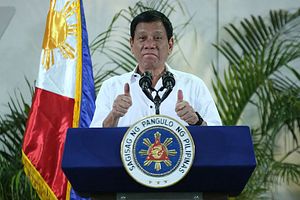Last week, the Philippines disclosed details regarding ongoing anti-submarine warfare (ASW) training. The details once again put the spotlight on the Southeast Asian state’s efforts to develop a capability that it has only recently acquired as well as integrate ASW into the Philippines’ fuller set of capabilities.
As I have noted before in these pages, as Philippine military modernization continues under Duterte, with a mix of continuity and change, one of the notable developments has been the delivery of Leonardo AW-159 anti-submarine helicopters under the Anti-Submarine Helicopter Acquisition Project. This would give the Philippines an airborne anti-submarine warfare capability that it had lacked previously.
After some delay, the AW-159s – which are capable of speeds of 291 kilometers per hour, have a range of 777 kilometers, and can be armed with rockets, torpedoes, depth charges, and modern sonar systems – were delivered to the Philippines back in May 2019. And with the helicopters being delivered, the focus has shifted to how the Philippines will be utilizing them, both on their own terms as well as relative to its fuller range of capabilities.
Last week, this aspect of Philippine defense capabilities was in the headlines again with comments by the Philippine Navy regarding anti-submarine warfare training. Philippine Navy flag-officer-in-command Giovanni Carlo Bacordo said that the pilots and aircrew for the AW-159 helicopters are currently undergoing ASW training.
Per Bacordo, as reported by the Philippine News Agency (PNA), the trainings, which are set for the entire year, are designed to equip personnel with adequate knowledge in manning these specialized helicopters and the finer points of submarine detection and prosecution. They are in support of the flight training of the AW-159 pilots conducted in Yeovil, in the United Kingdom last year, which involved training in the use of various surveillance systems of the AW-159s, including its dipping sonar, which is its primary equipment for submarine detection.
Bacordo did not disclose much more in terms of specifics regarding how this ASW training would be integrated with the Philippine military’s wider capabilities. But he did note that once the frigates – the BRP Jose Rizal and BRP Antonio Luna – arrive, the ships would be able to team up with the AW-159s, thereby facilitating the ASW maneuvers and training in the detection of submarines.
To be sure, much still remains unclear about how all this will be translated into reality. But given the significance of this capability for the Philippines and its potential implications, this will continue to remain one notable aspect to monitor in the months and years to come.

































